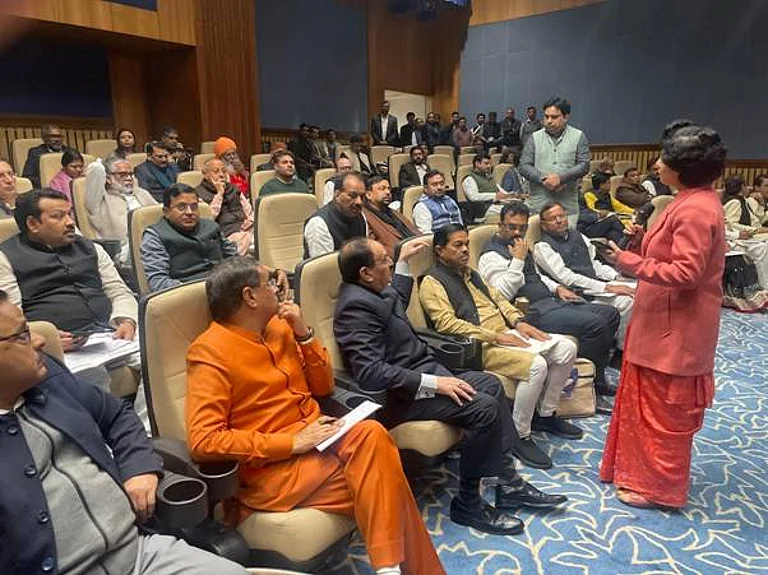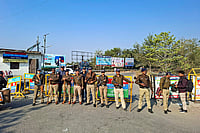Against the backdrop of global health uncertainties and expanding ecological vulnerabilities, the Centre on Thursday opened the National One Health Mission Assembly 2025, with Union Health Minister JP Nadda asserting that India’s integrated One Health approach will be crucial to strengthening the country’s long-term health security.
Terming the theme “timely and transformational,” Nadda said the One Health framework now forms the backbone of India’s strategy to bolster health security and pandemic preparedness.
“‘One Earth, One Health, One Future’ is not merely a slogan; it is the strategic architecture guiding our response to emerging global health challenges,” he remarked.
Pointing to India’s ascent as a global hub for medical innovation, the Minister recalled the country’s achievements in vaccine development—from Covaxin and Covishield to Corbevax and the world’s first intranasal COVID-19 vaccine. India’s ability to supply vaccines to over 100 nations, he said, reaffirmed its role as “a reliable health partner to the world.”
He noted that the country is now advancing next-generation vaccine technologies, including mRNA, DNA, viral-vector platforms and biosimilars, enhancing India’s ability to mount rapid responses to new pathogens.
Nadda also highlighted India’s progress in diagnostics, citing indigenous innovations such as TrueNat, PathoDetect and CRISPR-based assays, which have enabled faster and accessible disease detection. Platforms like INSACOG and COWIN, he said, exemplify India’s growing capability to manage large-scale genomic and digital health systems.
Referring to the National One Health Mission (NOHM) as a “whole-of-government model,” he said the initiative unites 16 Central and State ministries and departments, spanning animal health, human health, agriculture, environment, defence, earth sciences and disaster management.
“It is for the first time that India has built such a comprehensive, cross-sectoral mechanism,” he said.
The Minister noted that early activities—such as integrated surveillance across slaughterhouses, bird sanctuaries, zoos and municipal wastewater systems—have already been rolled out to track antimicrobial resistance and emerging infections.
A national network of 23 BSL-3 and BSL-4 laboratories is being established as part of the Mission. “These high-containment facilities form the frontline of our defence against novel or mutating pathogens,” he added.
The Minister urged participating agencies to leverage the Assembly as a platform for deeper collaboration and knowledge-sharing.
Describing the Mission as the beginning of a “true Jan Andolan for One Health,” Dr V.K. Paul, Member (Health), NITI Aayog stressed that zoonotic infections, climate-sensitive diseases and borderless health threats demand unified responses.
With India’s scale and biodiversity, he said, the country holds both “a unique responsibility and opportunity.”
Dr. Paul underscored the need to strengthen surveillance systems in hotspots where human–animal–ecosystem interactions are high and called for synchronised outbreak response mechanisms across institutions and States. He emphasised the creation of a new cadre of One Health specialists through joint training and integration of the approach into academic curricula.
While national frameworks offer direction, Dr Paul reiterated that States will be the primary implementing agencies and their proactive engagement is essential to the Mission’s success.
Principal Scientific Adviser Dr. Ajay K. Sood said the Mission marks the culmination of years of effort to bring together formerly siloed domains—human health, animal health, plant health and environmental systems—into a unified national strategy.
“For the first time, 16 key stakeholders, including States and Union Territories, have converged on one platform to operationalise this integrated vision,” he noted.
He said the Mission’s agenda carries the “depth and boldness needed to protect both people and the ecosystems that sustain them.”
A Compendium of SoPs for the BSL-3 Laboratory Network was released on the occasion to ensure harmonised protocols for high-containment labs.
Senior officials, including Joint Secretary Anu Nagar, ICMR Scientist-G Dr Nivedita Gupta, and representatives from international organisations and partner agencies attended the inaugural session.


























